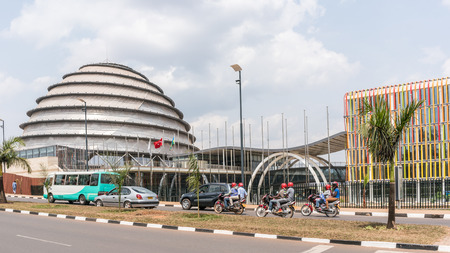Of course, connected devices will require robust, secure communications at every point in the chain, from sensor nodes to the cloud and back again. This is where a plethora of wireless positioning and communications technologies come into play.
Global navigation satellite system (GNSS) are becoming more accurate, partly due to data fusion techniques that combine satellite signals with location information derived from cellular and Wi-Fi networks and, in the case of vehicles, data from wheel-tick sensors. (Click here to see Part 1 of this article)
Familiar Wi-Fi and Bluetooth links, in a variety of flavors suited to different IoT applications, will proliferate, particularly where cellphones are used as internet gateways. Then there’s Narrowband IoT (NB-IoT), a new, ultra-low power technology for communicating small amounts of data over existing cellular radio networks, says Diego Grassi, senior manager Market Development, at u-blox.
NB‑IoT has already been proven in a number of applications, including remote metering, where it eliminates the need for dedicated networks. Here, it facilitates rapid smart meter deployment with communications delivered over established, secure and reliable cellular networks that offer guaranteed quality of service. NB-IoT is particularly effective in challenging locations such as inside buildings, or even in cellars.
For video and other high-bandwidth communications, high-speed, low latency 4G LTE networks are already playing a vital role. 5G is emerging too, and in the near future will increase network capacity and speeds by an order of magnitude. Communications links will be able to carry data from millions more sensors and consumer will be able to download Ultra HD videos in seconds.
u-blox’s unique heritage combines in-depth experience in positioning, short range wireless and cellular radio technologies, so the company is perfectly positioned to provision smart city wireless networks. u-blox’s integrated circuits and modules deliver secure, robust communications, whatever the environment. Equally important, modules are simple to install, scalable and easily upgraded as standards evolve.
They also feature low power consumption, long operating life and minimal maintenance. As wireless standards develop, u-blox is playing a major role by participating in the most relevant industry bodies, enabling the company to keep its customers at the forefront of developments.
The smart city is bringing a better quality of life to hundreds of millions of citizens around the world and u-blox is delivering the connections that make it all possible in this vitally important aspect of the Internet of Things that Really Matter.

Below are five examples of smart cities in the making:
Bristol, UK
The Bristol Is Open initiative is explained as, “Using data sensors, smart city technologies will be able to respond in real-time to everyday events including congestion, waste management, entertainment events, e-democracy, energy supply and more”. Initiatives range from the council making its underground ducts and fiber optic networks accessible to service providers to participating in the REPLICATE project (Renaissance in Places with Innovative Citizenship And Technology) – a European research and development project that aims to deploy integrated energy, mobility and ICT solutions in city districts.
Georgia, US
The Georgia Power Company uses a power distribution technology that provides smart throttling of energy generation in response to demand fluctuations. It then offers its customers the option of a Smart Usage Rate to control their power bills by paying attention to which appliances are running and when they’re used in order to better manage demand.
Yinchuan, China
Yinchuan describes itself as “the premier Smart City capital of China”. The city administrators set themselves three objectives: to benefit people’s livelihoods, efficient administration, and industry derivation. Working with ZTE Corporation, the city has built a “Map-Network-Cloud” architecture to manage, among other things, government affairs, smart transportation and smart environment protection. 20,000 sets of servers process the city’s data.
Kigali, Rwanda
Started in Kigali, Smart Rwanda is a country-wide initiative to develop smart cities and smart villages that use information and communication technologies (ICT) to help tackle development challenges such as poverty, availability of basic services, and employment. The idea spread and the concept of Smart Africa came out of Kigali’s “Transform Africa Summit” held in October 2013. Smart Africa’s goal is to mobilise US$300 billion of investment in the ICT sector by 2020 to make the whole continent smarter.
Santiago, Chile
Santiago is home to 40% of Chile’s population of around 18 million people. In 2012, outgoing President Sebastián Piñera set a goal for Chile to become a developed nation, measured in terms of GDP per capita, by 2020. Santiago’s smart city initiatives are playing a central role with declared goals to “improve quality of life for its inhabitants by increasing access to energy, creating environmentally friendly smart homes, and emphasising the use of sustainable energy”. Electronically controlled home appliances, installation of smart meters with two-way communication, and electronic information at bus stops all form part of the initiative.
The author of this blog is Diego Grassi, senior manager Market Development, at u-blox
Comment on this article below or via Twitter: @IoTNow_ OR @jcIoTnow










